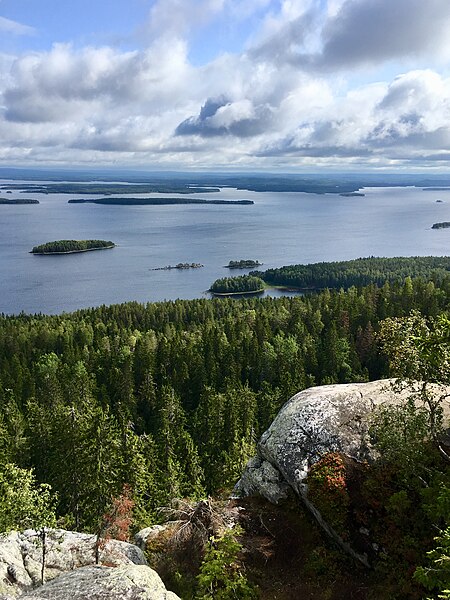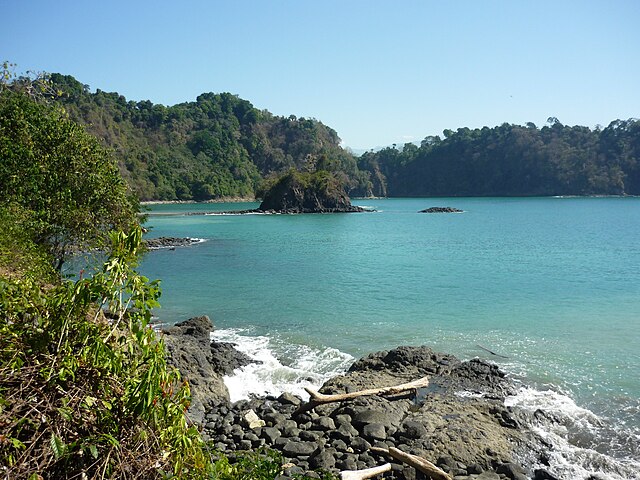Hot Springs National Park
Hot Springs National Park is an American national park in central Garland County, Arkansas, adjacent to the city of Hot Springs, the county seat. Hot Springs Reservation was initially created by an act of the United States Congress on April 20, 1832, to be preserved for future recreation. Established before the concept of a national park existed, it was the first time that land had been set aside by the federal government to preserve its use as an area for recreation. The hot spring water has been popularly believed for centuries to possess medicinal properties, and was a subject of legend among several Native American tribes. Following federal protection in 1832, the city developed into a successful spa town.
Hot spring pool steaming at the entrance of the park
Aerial view of Hot Springs National Park showing the historic Bathhouse Row. Fourth from the left is the Fordyce Bathhouse which serves as the park visitor center.
Central Avenue, on left, circa 1900, taken from the tower of the Eastman Hotel. Many commercial buildings are on the west side, across from Bathhouse Row.
Big Iron bathhouse (Harper's 1878)
A national park is a natural park in use for conservation purposes, created and protected by national governments. Often it is a reserve of natural, semi-natural, or developed land that a government declares or owns. Although individual countries designate their own national parks differently, there is a common idea: the conservation of 'wild nature' for posterity and as a symbol of national pride. National parks are almost always open to visitors.
Bogd Khan Uul National Park in Mongolia is one of the earliest preserved areas now called a national park.
National parks often allow protected species to flourish. Pictured are Alpine ibexes (Capra ibex) in the Gran Paradiso National Park, Piedmont, Italy. The Ibex population increased tenfold since the area was declared a national park in 1922.
Landscapes of the Koli National Park in North Karelia, Finland, have inspired many painters and composers, e.g. Jean Sibelius, Juhani Aho and Eero Järnefelt.
Manuel Antonio National Park in Costa Rica was listed by Forbes as one of the world's 12 most beautiful national parks.








